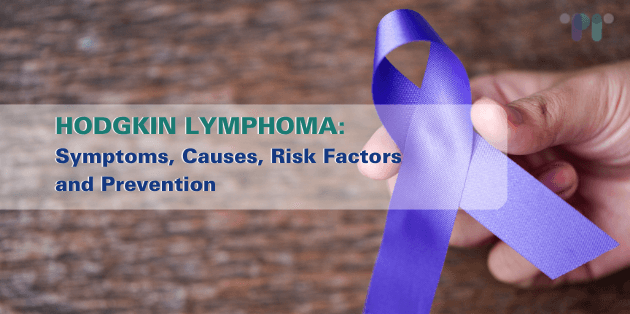Hodgkin Lymphoma: Symptoms, Causes, Risk Factors and Prevention

Hodgkin lymphoma, a cancer affecting the lymphatic system, is a condition that deeply impacts thousands of lives each year. Globally, approximately 83,000 people are diagnosed with this disease annually. While advances in medical research have significantly improved survival rates, early detection and awareness remain critical. In this blog, we’ll explore the symptoms, causes, risk factors, and prevention strategies of Hodgkin lymphoma. By understanding these aspects, we can better support those affected and contribute to the fight against this cancer. Join us as we delve into the facts and human stories behind Hodgkin lymphoma, shedding light on a path toward hope and healing.
What is Hodgkin lymphoma?
Hodgkin lymphoma is a malignancy that starts in the lymphatic system, specifically from aberrant B lymphocytes, which are a type of white blood cell. These malignant cells can move from one lymph node to another and may also harm other organs in the body, including the spleen, bone marrow, and liver.
Reed-Sternberg cells, massive aberrant cells present in lymph nodes, are a defining feature of Hodgkin lymphomas. These cells are not found in healthy lymph nodes and are characteristic of Hodgkin lymphoma.
What are the symptoms of Hodgkin lymphoma?
The symptoms of Hodgkin lymphoma might vary, however, frequent signs to look for include:
- Swollen Lymph Nodes: A painless swelling of lymph nodes in the neck, armpits, or groin.
- Fatigue: Persistent fatigue that does not improve with rest.
- Fever: unexplained or persistent fevers.
- Night Sweats: Excessive sweating at night, often soaking bedclothes.
- Weight Loss: It occurs unintentionally and is not caused by food or activity.
- Itchy Skin: Persistent itching that is unrelated to other conditions.
- Coughing or chest pain: Caused by enlarged lymph nodes in the chest.
- Loss of appetite: A decrease in the desire to eat.
If you experience these symptoms, it’s important to consult a healthcare professional for a proper diagnosis and treatment.
Did you know that Hodgkin lymphoma often presents with a painless swelling of the lymph nodes, typically in the neck, armpit, or groin, but it can also cause unusual symptoms like persistent itching without a rash?
What are the causes of Hodgkin lymphoma?
The precise causes of Hodgkin lymphoma are not entirely understood, however, various variables may contribute to its development.
- Genetic Mutations: Changes in lymphocyte DNA might cause the cells to proliferate and divide uncontrollably.
- Epstein-Barr Virus (EBV): Infection with EBV, which causes mononucleosis, has been associated with an elevated risk of Hodgkin lymphoma.
- Weakened Immune System: People with impaired immune systems, such as those with HIV/AIDS or those who use immunosuppressive medicines, are more vulnerable.
- Family History: Having a close family member with Hodgkin lymphoma or another type of lymphoma increases the risk of having the disease.
- Age: Hodgkin lymphoma is most usually diagnosed in adults aged 15 to 30 and over 55.
- Gender: Men are slightly more likely to develop Hodgkin lymphoma than women.
- Geographical Region: The incidence of Hodgkin lymphoma is higher in certain regions, such as the United States, Canada, and northern Europe, compared to Asia.
While these factors may increase the risk, many people with these risk factors do not develop Hodgkin lymphoma, and some people without any known risk factors can still get the disease.
What are the risk factors for Hodgkin lymphoma?
Hodgkin lymphoma, a lymphatic cancer, includes various risk factors that can enhance a person’s chances of having the disease. Understanding these risk factors can aid early detection and preventative efforts.
- Age: Hodgkin lymphoma is most typically diagnosed in two age groups: early adulthood (ages 15-30) and late adulthood (over 55).
- Gender: Males have a slightly higher risk of developing Hodgkin lymphoma than females.
- Family History: Having a close family member, such as a parent or sibling, with Hodgkin cancer or another cancer raises the risk.
- Epstein-Barr Virus (EBV) Infection: Previous exposure to EBV, which causes mononucleosis, has been related to an increased risk of Hodgkin lymphoma.
- Weakened Immune System: Individuals with weakened immune systems, such as those with HIV/AIDS or those taking immunosuppressive drugs after organ transplants, are at an increased risk.
- Socioeconomic Status: Some studies suggest that Hodgkin lymphoma is more common in people from higher socioeconomic backgrounds, possibly due to differences in exposure to infectious agents during childhood.
- Geographic Region: The disease is more prevalent in certain parts of the world, such as the United States, Canada, and northern Europe, compared to Asia and Africa.
While having one or more of these risk factors may increase the likelihood of developing Hodgkin lymphoma, it’s important to note that many people with these risk factors never develop the disease, and some people with no known risk factors can still get it. Regular check-ups and awareness of the symptoms can aid in early detection and treatment.
How can we prevent Hodgkin lymphoma?
While there is no surefire strategy to avoid Hodgkin Lymphoma, various actions may help lower the risk. Because the specific causes are unknown, preventative efforts focus on reducing recognized risk factors and enhancing general health. Here are a few measures that could help:
Maintain a healthy immune system:
- Avoid infections:Reducing exposure to infectious organisms, such as the Epstein-Barr virus (EBV), which is connected to Hodgkin lymphoma, may be beneficial. This involves maintaining proper hygiene and avoiding close contact with infected people.
- HIV Prevention: Preventing HIV infection through safe practices and regular testing helps minimize the risk, as HIV/AIDS weakens the immune system, increasing the risk of Hodgkin lymphoma.
Healthy Lifestyle Options:
- Balanced Diet: A diet high in fruits, vegetables, and whole grains helps improve overall immunological health.
- Regular Exercise: Regular physical activity promotes good weight management and immunological function.
- Avoiding Tobacco and Limiting Alcohol: To minimize your risk of cancer, including Hodgkin lymphoma, stop smoking and limit your alcohol use.
Regular medical check-ups:
- Health Monitoring: Regular check-ups might uncover uncommon symptoms early on. This is especially relevant for people with a family history of Hodgkin’s lymphoma or other lymphomas.
- Vaccines: Keeping up with vaccines, including those that protect against viral illnesses such as HPV and hepatitis B, can help safeguard your immune system.While these actions can improve overall health and potentially reduce the incidence of Hodgkin lymphoma, it’s crucial to recognize that not all cases are preventable.
Conclusion
To summarize, early detection and timely treatment are critical for improving outcomes in people with Hodgkin lymphoma. By raising awareness and encouraging frequent medical check-ups, we may make great strides toward combating this disease and improving the quality of life for people affected.
References:
About Author
Dr. A. Venugopal
MD (General Medicine), DM (Medical Oncology), MRCP – SCE Medical Oncology (UK), ECMO (Switzerland).
Dr A. Venugopal is One of the best medical oncologist and Hemato Oncologist in hyderabad, currently serving as the Head of the Department and Senior Medical Oncologist, Hemato Oncologist at Pi Health Cancer Hospital in Gachibowli, Hyderabad. He brings over 15 years of extensive experience in the field of Oncology.

